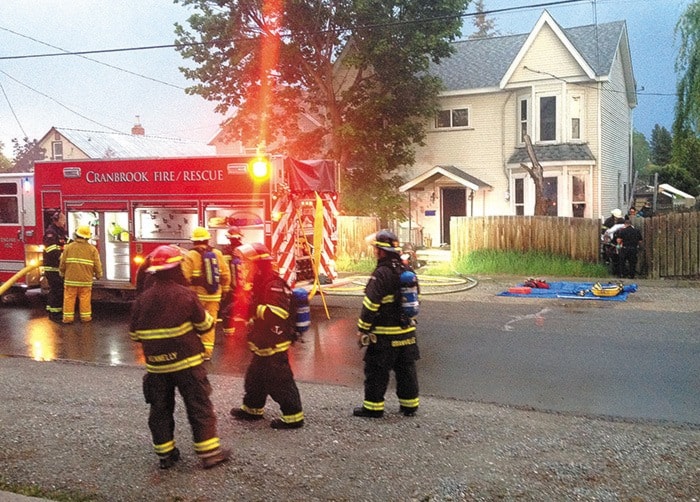Council approved a policy that directs emergency crews to strive to provide full service level operations. The policy was brought forward by Fire and Emergency Services and will take effect on or before June 30, 2016.
The alternative decision provided to council was for city staff to draft a policy that would limit firefighters to defensive or exterior operations. That would of course mean that firefighters would fight the blaze from the outside and not enter a building or residence.
Scott Driver, deputy director of Cranbrook Fire and Emergency Services, said the problem is WorkSafe rules state that for a crew to enter a building there needs to be four members on the scene, as well as two on the way.
However, he noted that Cranbrook only has four fire fighters working at a time — with one of them on dispatch duties for the East Kootenay.
Driver said the most cost effective method of establishing and maintaining the four person initial response required for full service level operations would be to discontinue providing dispatch services and utilize staffing for operational response.
That will require the fire department to contract local dispatch to an external provider.
Driver said the cost has not yet been determined, but is estimated at around $60,000 - $80,000 per year. The dispatch currently brings in approximately $119,000 in annual revenue.
The city currently doesn’t have a policy that declares firefighting or emergency service operation levels. However, the British Columbia Fire Service Minimum Training Standards requires that each authority having jurisdiction must select and declare its firefighting service level, in order to determine which set of minimum training standards are to be met.
In 2014, the province established the minimum standards of training required for fire personnel in B.C. It requires that departments like the one in Cranbrook declare the level of service it offers.
The department wrote that there are three service level choices.
The first is Exterior which restricts firefighting operations to the exterior of the building. The second level is Interior, and would restrict entry opportunities to small, simple structures such as single family dwellings and small businesses only.
Driver said that choice would not be a good one given the significant number of multi-occupancy residential and commercial buildings in Cranbrook. Driver said the third choice, Full Service operations, does align with the city’s conditions, resource availability, the expectations of the community as well as the current training levels and administrative controls.
Mayor Lee Pratt noted that were council to go with the second option, the rise in residential and business insurance costs would likely be more than any rise in service costs from the dispatch changes.
A transitional period was granted until June 30, 2016.
The current dispatch agreement with the RDEK expires December 31, 2015.
In order to effectively transition from local to external dispatch, the city may have to extend the current conditions of the local dispatch agreement to a maximum expiry date no later than June 30, 2016.
